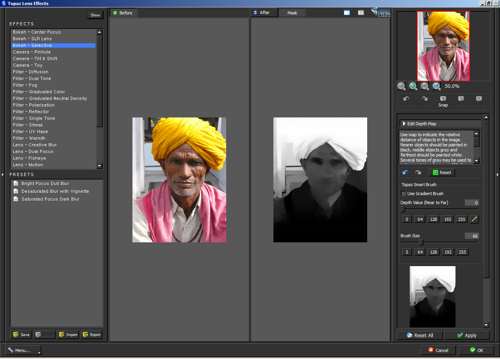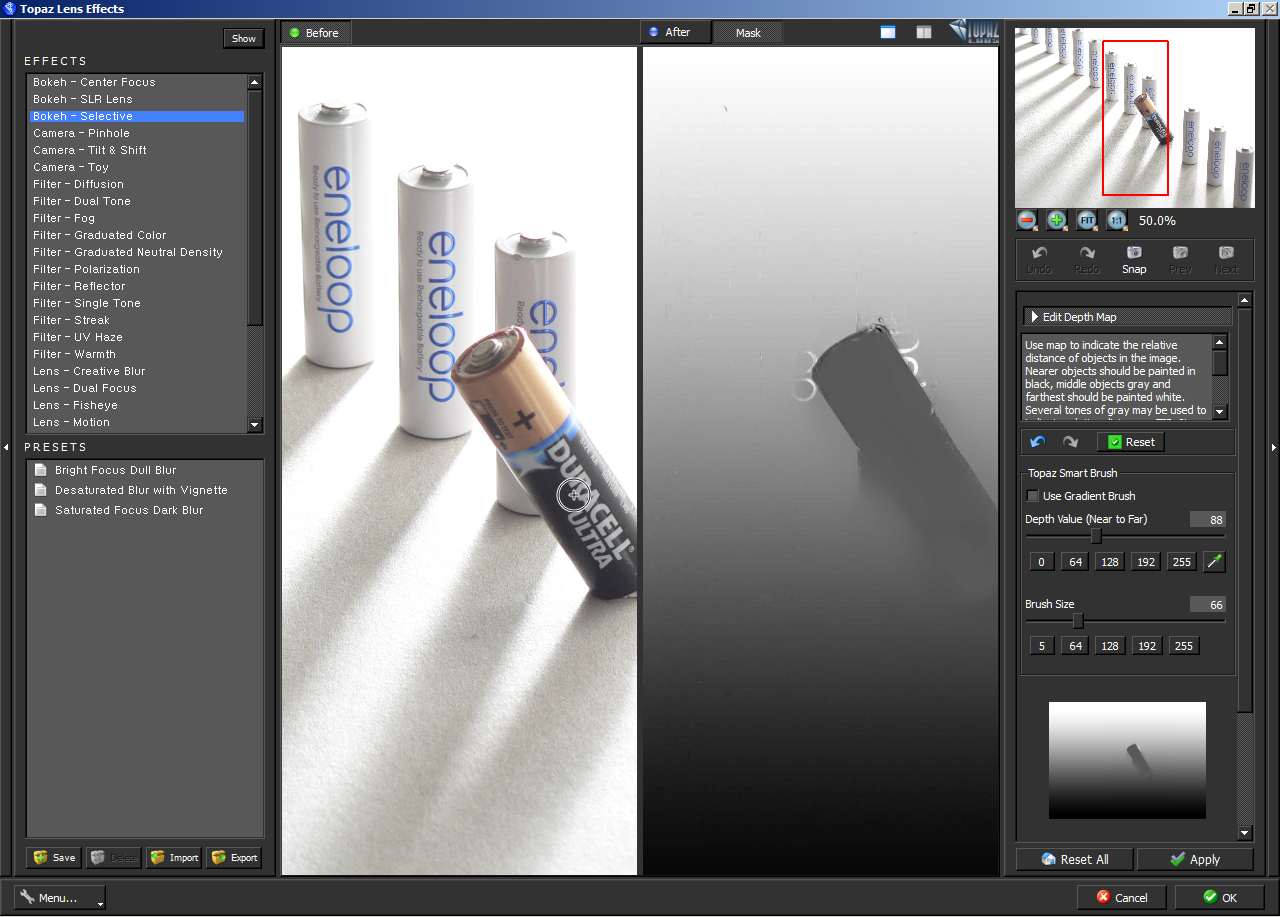
Keep repeating until you have all the batteries painted.

Sample the color near the bottom of the battery, then paint the battery this color. Now repeat the process with the battery behind. You can see in the image above it has picked up some of the battery behind as well. Topaz Lens Effects uses an 'intelligent' brush system, so it will try to automatically fill out the battery to the edges when you paint around the inside of the battery. We can now paint the duracell battery to ensure that it is all in the same focus plane. Click the color dropper tool in the smart brush section, and then click next to the base of the duracell battery. With the gradient as it is at the moment, the top of each battery would be at a different focus point to the bottom.Ĭlick on Edit depth map again to get to the depth map view. Now we can start painting the batteries into the map, as each battery should be at a single depth. Press 'open' to open it as the depth map. On the menu go to 'Load Mask.' and locate the gradient image you just saved. tif file.ĭelete your gradient layer, and select the duplicated background layer again. Create a new layer and draw a gradient from black to white, going from black near the bottom of the image, to white near the top. So you can exit the plugin (Cancel) to get back to Photoshop. However, Topaz Lens Effects can load depth map images. In the case of this image though, this doesn't work very well. (You often need to repeat this several times across the image width). Then draw a gradient across the image from bottom to top. To do this, tick the 'Use Gradient Brush' checkbox. Often you will want to start by drawing some gradients across the image, to create the depth of near the camera at the bottom of image, to far away from the camera further up the image. With a blank map, we can start creating our depth map. Pressing the green reset button will remove the generated depth map.

In the case of this image though, the automatic depth map isn't very good.
#Topaz lens effects download software
The software will try to automatically create a depth map for you. On the left you have the image, while on the right is the depth map. Click on 'Edit Depth Map' in the right hand pane, and the screen will change to a split screen view. We need to create our depth map so that the software can work out what parts of the image should be in focus, and which parts should be out of focus. Then you have all the other shades of gray in between the two. White on the map indicates far off in the distance. Black on the depth map indicates very close to the camera. To apply a depth of field effect, Topaz Lens Effects uses a depth map.

For creating a shallow depth of field effect, I have chosen 'Bokeh - Selective'. In the left hand panel you have a range of different effects. This will open the Topaz Lens Effects plugin. After the software is installed, open the image in Photoshop, duplicate the background layer, then go to Filter > Topaz Labs > Topaz Lens Effects.


 0 kommentar(er)
0 kommentar(er)
